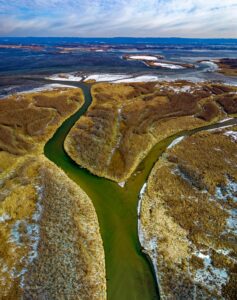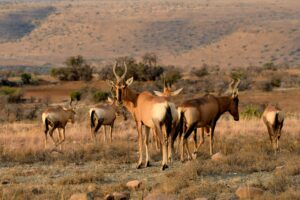Northern Botswana, a land of shimmering salt pans, winding rivers, and vast savannas, has become a model of successful wildlife conservation. But this transformation didn’t happen by chance—it’s the result of dedicated individuals, innovative strategies, and a deep commitment to protecting this extraordinary ecosystem for future generations.
This article explores the evolution of northern Botswana’s landscape and how it became a crucial sanctuary for wildlife, highlighting the power of collaborative conservation efforts.
From Crisis to Conservation: A Turning Point for Wildlife
For years, northern Botswana, like much of Africa, faced severe threats to its wildlife. Unregulated hunting, habitat destruction from agricultural expansion, and escalating human-wildlife conflict disrupted delicate ecosystems.
The turning point came when conservationists, governments, and local communities recognized the intrinsic value of protecting these wild spaces. Sustainable tourism emerged as a viable economic alternative, proving that safeguarding the environment could bring lasting benefits—both ecologically and financially.
Empowering Communities: The Key to Long-Term Conservation
One of the most effective conservation strategies in Botswana has been community-based natural resource management (CBNRM). This approach empowers local people as custodians of their land, giving them direct incentives to protect wildlife.
Through CBNRM initiatives, communities receive tangible benefits, such as:
Employment in eco-lodges and safari operations
Income from guiding, craft production, and cultural tourism
Revenue-sharing from conservation-focused tourism activities
By aligning conservation with economic opportunities, Botswana has turned wildlife protection into a sustainable and community-driven effort.
Tourism as a Conservation Tool
When managed responsibly, tourism plays a vital role in conservation. In northern Botswana, eco-tourism generates crucial revenue for anti-poaching initiatives, habitat restoration, and local development.
The presence of tourists also acts as a natural deterrent to poaching, increasing vigilance and monitoring in protected areas. More importantly, it reinforces the idea that wildlife is more valuable alive than hunted.
Key Wildlife Conservation Areas in Northern Botswana
Northern Botswana is home to some of Africa’s most iconic wildlife reserves and national parks, each playing a critical role in conservation efforts:
1. Okavango Delta

A UNESCO World Heritage Site, the Okavango Delta is a lush oasis in the heart of the Kalahari Desert. This unique inland delta supports an incredible diversity of wildlife, including elephants, lions, African wild dogs, and a vast array of bird species. The Delta’s conservation success is a testament to careful management and community involvement.
2. Chobe National Park

Famous for hosting one of the largest elephant populations in Africa, Chobe National Park is a haven for wildlife enthusiasts. The Chobe River attracts a variety of animals year-round, offering spectacular game-viewing opportunities on both land and water.
3. Moremi Game Reserve

Situated within the Okavango Delta, Moremi Game Reserve is renowned for its diverse ecosystems and abundant wildlife. From leopards and cheetahs to antelope species, Moremi offers exceptional game-viewing experiences in a pristine wilderness setting.
Challenges and the Future of Conservation
Despite Botswana’s conservation achievements, challenges remain. Climate change, human-wildlife conflict, and poaching continue to threaten wildlife populations. Addressing these issues requires ongoing collaboration between governments, communities, NGOs, and the tourism industry.
Innovative solutions, such as technology-driven anti-poaching efforts and sustainable livelihood programs, are critical for ensuring long-term conservation success. The future of Botswana’s wildlife depends on continued investment in these strategies.
Why Conservation Efforts Need Your Support
The success of Botswana’s conservation journey proves that when communities are empowered and tourism is managed responsibly, wildlife protection becomes both effective and sustainable. But the work isn’t over—ongoing support is essential to ensure future generations can experience the magic of this extraordinary place.
Help Support My Work in Wildlife Conservation
I am committed to documenting and sharing the vital stories of wildlife conservation, shedding light on both the triumphs and challenges. Your support enables me to continue this work, directly contributing to:
Raising awareness: Amplifying the voices of conservationists and bringing critical stories to a wider audience.
Supporting on-the-ground projects: Partnering with local organizations that protect wildlife and empower communities.
Promoting sustainable tourism: Advocating for responsible travel that benefits both wildlife and people.
Every contribution, no matter the size, makes a difference. Please consider donating to support my work and help secure a future where wildlife thrives in northern Botswana and beyond.


